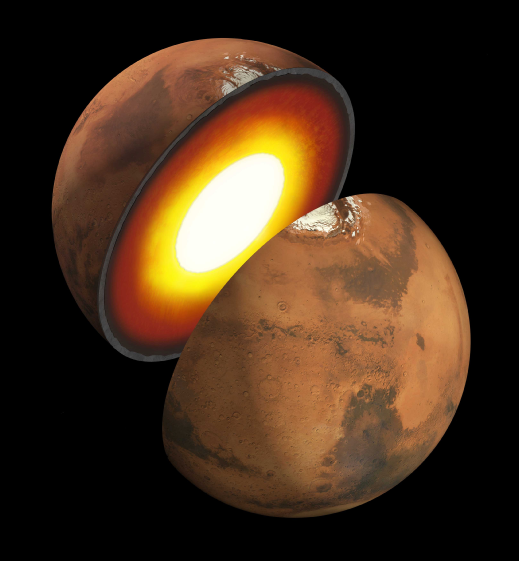




InSight — Studying the 'Inner Space' of Mars
InSight, short for Interior Exploration using Seismic Investigations, Geodesy and Heat Transport, is a Mars lander designed to give the Red Planet its first thorough checkup since it formed 4.5 billion years ago. It is the first outer space robotic explorer to study in-
Studying Mars' interior structure answers key questions about the early formation of rocky planets in our inner solar system -
The lander uses cutting edge instruments, to delve deep beneath the surface and seek the fingerprints of the processes that formed the terrestrial planets. It does so by measuring the planet's "vital signs": its "pulse" (seismology), "temperature" (heat flow), and "reflexes" (precision tracking).
This mission is part of NASA's Discovery Program for highly focused science missions that ask critical questions in solar system science.

Interior of Mars
Mars' Interior: Artist's rendition showing the inner structure of Mars. The topmost layer is known as the crust, underneath it is the mantle, which rests on a solid inner core.